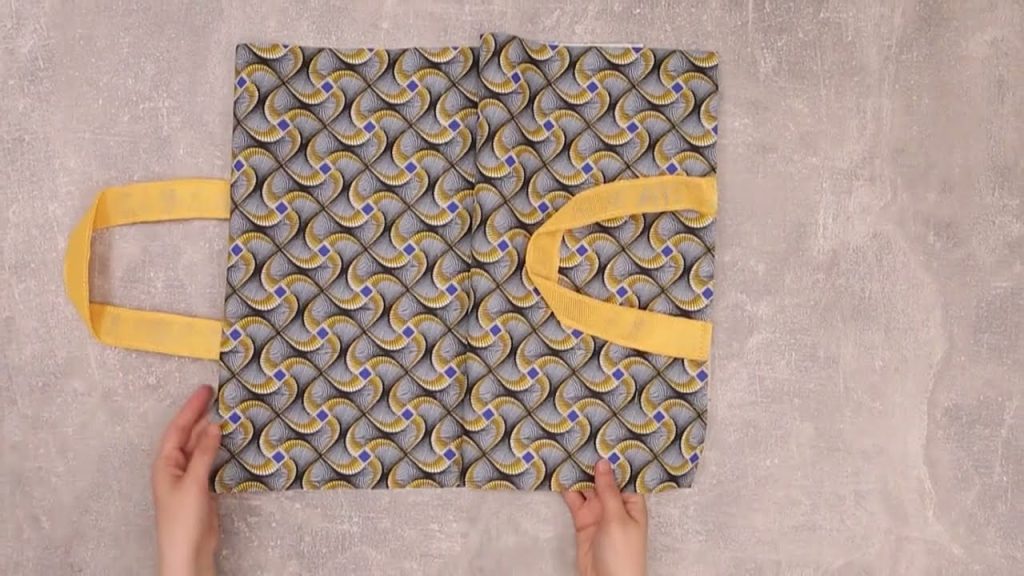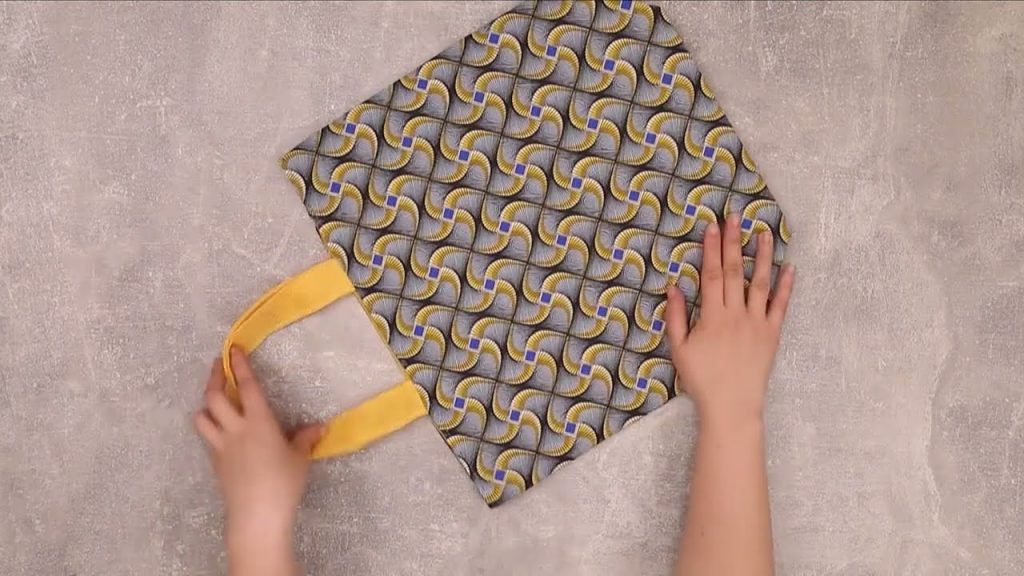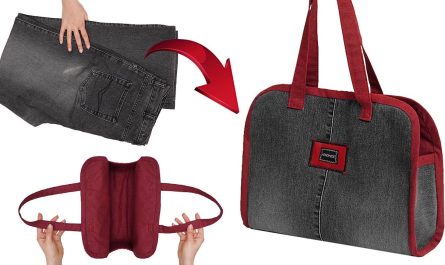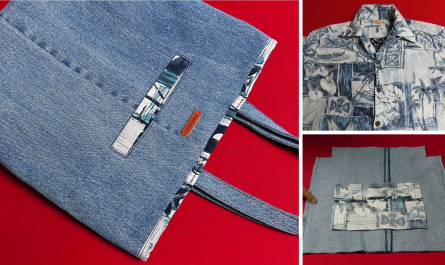Imagine a perfectly structured, sophisticated zippered pouch that is so simple and fast to sew, you’ll be making one in every fabric you own! This detailed tutorial, inspired by the incredibly efficient method in the “An amazingly simple and quick way to sew a bag – I taught all my friends!” video from Miarti – Reuse, will guide you through creating a charming, boxy bag using a single main piece of fabric and a zipper. The brilliance of this design is its hyper-efficient construction, which minimizes seams and maximizes structure, resulting in a professional-looking finish with minimal fuss.
Get ready to transform two pieces of fabric and a zipper into a highly functional accessory perfect for cosmetics, tech cables, craft supplies, or simply as a chic clutch for a night out!

Why This “Speedy Box-Pouch” Will Be Your New Go-To Pattern
This design is a testament to the power of simplicity, offering several compelling reasons to make it your next sewing project:
- Lightning Fast: The entire project can be completed in well under an hour, making it perfect for last-minute gifts or stash-busting.
- Minimal Pattern Pieces: It requires only one exterior rectangle and one lining rectangle—no separate sides, bases, or complex cuts.
- Structured & Stable: The heavy interfacing is the secret weapon, giving the pouch a firm, professional shape that holds its contents securely.
- Wide, Stable Base: The efficient boxed-corner technique creates a perfect, wide base that allows the pouch to stand on its own.
- Beginner-Friendly: The steps rely entirely on straight-line stitching, making it an ideal first project for new sewers.
Materials You’ll Need:
This pattern requires only three main ingredients, plus a zipper and a few basic notions.
- Main Exterior Fabric (Sturdy Cotton/Canvas): 1 piece, 40 cm x 30 cm. (A medium-weight cotton, canvas, or even pre-quilted fabric works well.)
- Lining Fabric (Cotton): 1 piece, 40 cm x 30 cm. (A soft, lightweight cotton works well.)
- Thick Fusible Interfacing/Felt Wadding: 1 piece, 40 cm x 30 cm. (Crucial for the bag’s structure; use heavy fusible fleece or dense interfacing.)
- Zipper: 1 piece, 30 cm long. (A sturdy zipper in a coordinating color.)
- Small Fabric Tabs (Optional wrist strap/handle attachment): 2 pieces, 8 cm x 4 cm.
- Matching Thread: High-quality polyester thread.
- Basic Sewing Tools: Sewing machine, fabric scissors or rotary cutter, ruler, fabric marker, pins or clips, iron, and ironing board.

Step-by-Step Tutorial: Crafting Your “Speedy Box-Pouch”
This tutorial is broken down into four efficient phases: preparation, zipper installation, body construction, and final shaping. All seam allowances are 1 cm unless otherwise stated.
Phase 1: Preparing the Structured Panels and Handle Tabs
The first phase stabilizes the fabric and prepares any small accessories.
- Layer and Fuse the Exterior: Take the 40 cm x 30 cm Exterior Fabric. Iron the Thick Fusible Interfacing/Felt onto the wrong side, following the manufacturer’s instructions. This creates one single, stiff, structured panel.
- Prepare Handle Tabs (Optional): Take the two 8 cm x 4 cm tabs. Fold them in half lengthwise and press. Fold the raw edges inward to meet the center crease and topstitch along the long edges. Fold the finished tabs in half to create a loop and set them aside.

Phase 2: Zipper Installation (The “Sandwich” Method)
The zipper is secured between the exterior and lining panels along the top edge.
- Pin First Side: Lay the Exterior Panel right side up. Place the Zipper on the 40 cm top edge, right side down. Pin the zipper tape along the edge.
- Pin Lining: Place the Lining Panel on top of the zipper (right side down, covering the zipper and exterior). The zipper is now “sandwiched” between the exterior and the lining. Pin all three layers together.
- Stitch Zipper: Using a zipper foot, stitch along the pinned edge (40 cm). Trim the threads.
- Attach Second Side: Open the exterior and lining away from the zipper. Align the remaining raw 40 cm edges of the exterior and lining, folding the bag in half so the remaining raw edges meet the other side of the zipper tape. Pin all three layers again, ensuring they are perfectly aligned. Stitch this second 40 cm seam.
- Press and Topstitch: Press the fabric away from the zipper teeth. Topstitch along both sides of the zipper, 0.5 cm from the seam, to secure the layers and give the top a crisp finish.

Phase 3: Bag Body Assembly
The bag is turned inside out to sew the perimeter and integrate the tabs.
- Turn Inside Out: Open the zipper halfway. Turn the entire piece inside out so the exterior and lining are matched up, right sides together.
- Attach Handle Tabs (Optional): Pin the raw ends of the prepared handle tabs securely to the exterior panel, positioning them near the center of the zipper ends (about 1 cm down from the zipper seam) on the exterior side only. Baste them in place.
- Stitch Perimeter: Pin all three remaining raw edges (the two sides and the bottom). Stitch all around the three sides. Crucially, leave a 10 cm opening along the center of the bottom seam of the lining for turning. Secure the seams at the zipper ends with extra backstitches.

Phase 4: Boxing the Corners and Finishing
The final step is creating the wide, flat base using the simple boxed-corner technique.
- Box the Corners: At all four corners (two exterior, two lining), measure and mark a 4 cm x 4 cm square from the corner. Cut out these squares.
- Sew Boxed Corners: Pinch the cut-out corner edges together, matching the side seam to the bottom seam to form a straight line. Pin and stitch the corner closed on all four corners (exterior and lining).
- Turn Right Side Out: Reach into the turning hole left in the lining bottom seam. Carefully pull the entire bag through the hole.
- Close Turning Hole: Stitch the turning hole closed (by machine or hand).
- Final Polish: Push the lining neatly inside the exterior bag. Zip the bag closed, pushing out the boxed corners firmly.

Your unique “Speedy Box-Pouch” Handbag is complete! This structured, elegant, and lightning-fast accessory is ready to use—and ready to teach all your friends!
Video tutorial:




